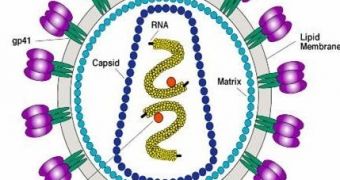It seems paradoxical, but our vulnerability to HIV seems to have been caused by the fact that we got immunity to another related virus. Our evolution seems not to have predicted that humans will eat chimps later on. A research team managed to show this by bringing back to life an inactive chimpanzee retrovirus that has never infected humans.
By developing immunity to chimps' endogenous retrovirus (PtERV1), humans seem to have left themselves exposed to another retrovirus: HIV. Over 100 copies of inactive PtERV1 spot the chimpanzee and gorilla genomes, while humans do not have any copy of the virus.
"About 4 million years ago, this virus was active and independently infecting all these species, but not humans," said co-author virologist Michael Emerman, virologist at the Fred Hutchinson Cancer Research Center in Seattle, Washington.
As ancient humans inhabited the regions where these closely related apes also lived, they supposed that an antiviral factor in our cells could have thwarted PtERV1. They put this on TRIM5?, an anti-retrovirus protein existent in various shapes in different primates.
The researchers revived PtERV1 virus by inserting its main genes into a mouse retrovirus. This chimeric virus easily infected cat cells lacking TRIM5? but hardly induced any infection in cat cells engineered to contain human TRIM5?.
Macaque monkeys (from Asia) have a TRIM5? type that impedes HIV-1 infection, while human TRIM5? is largely ineffective against HIV-1. That's why the researchers checked if TRIM5? from other primates can fight both PtERV1 and HIV-1. None could: it seems that immunity against one of the two viruses induced vulnerability towards the other.
"I think it's a reasonable model system that's really neat and provides us with important insights into the never-ending battle between host and pathogen. They have really reeducated virologists about evolution." said Thomas Hope, an AIDS researcher who studies TRIM5? at Northwestern University Feinberg School of Medicine in Chicago, Illinois.
But some puzzles remain. Even if ancient chimps were vulnerable to PtERV1, modern ones appear to be resistant. They seem now to have a humanlike version of TRIM5?, which could have emerged through mutation after the two species split, or chimps' resistance to TRIM5? could be the result of a combination of factors stopping retroviruses.

 14 DAY TRIAL //
14 DAY TRIAL //